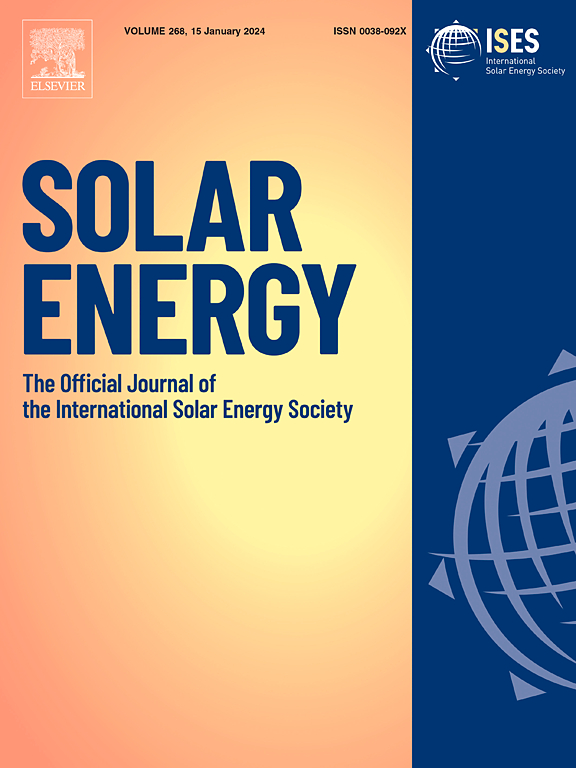面向可持续水能联系的混合光伏热集热器吸附脱盐系统动态数值模拟与性能评价
IF 6
2区 工程技术
Q2 ENERGY & FUELS
引用次数: 0
摘要
在人口持续增长和气候变化的推动下,能源和淡水短缺的全球挑战正变得越来越明显。吸附式海水淡化技术由于其利用低品位热能的能力,作为解决全球对淡水和能源日益增长的需求的一种可持续解决方案,受到了极大的关注。本文研究了在埃及Sohag市的天气条件下,光伏热(PVT)与吸附式海水淡化混合系统(ADS)的年度性能。采用MATLAB结合TRNSYS软件进行数值模拟,对系统运行参数进行年度评估,验证系统性能。该研究强调,PVT-ADS优于传统的吸附脱盐系统。在夏季,PVT的电效率比没有冷却的标准PV系统高15.80%。此外,从光伏组件捕获的热量将ADS的产水量提高到6.50 m3/t -day,冷却功率分别提高到156 W/kg。相比之下,独立ADS分别获得5.50 m3/t -day和143 W/kg。此外,混合PVT/吸附脱盐系统在废热或太阳能真空管太阳能集热器驱动ADS系统的情况下,可降低约20%和13%的淡水成本。最后,该研究结果强调了PV/T-ADS混合系统在解决干旱和半干旱地区能源和水资源短缺问题方面的潜力。本文章由计算机程序翻译,如有差异,请以英文原文为准。
Dynamic numerical modeling and performance assessment of a hybrid photovoltaic thermal collector adsorption desalination system for sustainable water-energy nexus
The global challenges of energy and freshwater shortages are becoming more pronounced, driven by the relentless march of population growth and climate change. Adsorption desalination techniques have gained significant attention as a sustainable solution to address the increasing global demand for fresh water and energy because of their ability to utilize low-grade thermal energy. This study presents the annual performance of a hybrid photovoltaic thermal (PVT) with adsorption desalination system (ADS) under the weather conditions of Sohag City, Egypt. Numerical modeling is employed using MATLAB coupled with TRNSYS software to annually evaluate the system’s operational parameters and validate system performance. The study highlights that the PVT-ADS outperforms traditional adsorption desalination systems. During the summer months, the PVT electrical efficiency was 15.80 % better than that of a standard PV system without cooling. Additionally, the heat captured from the PV module enhanced the ADS water production rate to 6.50 m3/ton-day and the cooling power to 156 W/kg, respectively. In comparison, the standalone ADS obtained 5.50 m3/ton-day and 143 W/kg, respectively. Moreover, the hybrid PVT/adsorption desalination system could reduce the freshwater cost by around 20 % and 13 % in the case of driving the ADS system by waste heat or solar evacuated tube solar collector. Conclusively, the findings of the study highlight the hybrid PV/T-ADS’s potential to simultaneously address energy and water scarcity in arid and semi-arid regions.
求助全文
通过发布文献求助,成功后即可免费获取论文全文。
去求助
来源期刊

Solar Energy
工程技术-能源与燃料
CiteScore
13.90
自引率
9.00%
发文量
0
审稿时长
47 days
期刊介绍:
Solar Energy welcomes manuscripts presenting information not previously published in journals on any aspect of solar energy research, development, application, measurement or policy. The term "solar energy" in this context includes the indirect uses such as wind energy and biomass
 求助内容:
求助内容: 应助结果提醒方式:
应助结果提醒方式:


